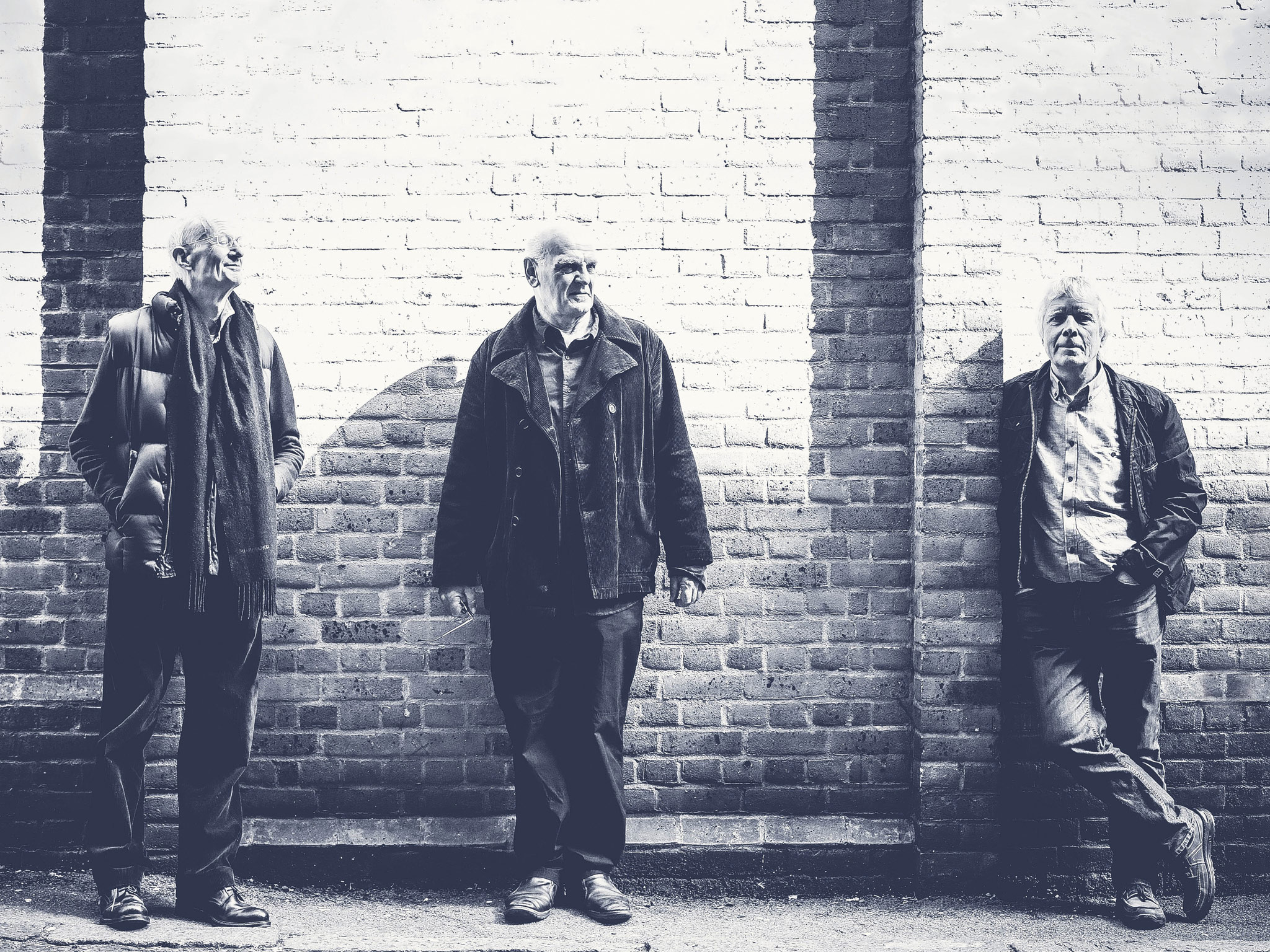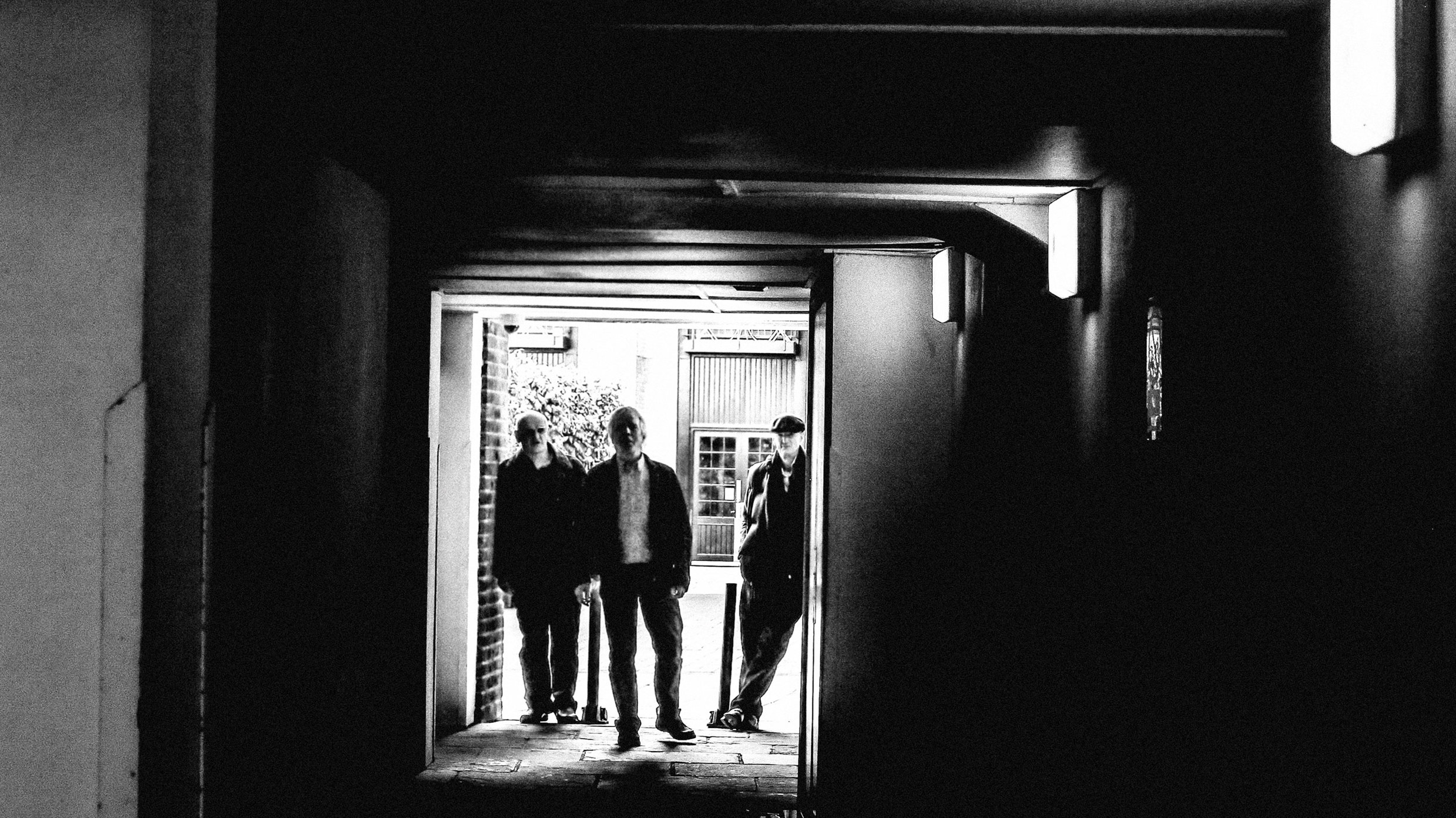A strange thing happened to Van der Graaf Generator in 1971: they became superstars. In Italy. To the amazement of everyone involved, their fourth album, Pawn Hearts, reached the top of the Italian charts at the back end of that year, where it refused to budge for three months.
A tour was hastily arranged for February ’72, the band’s arrival greeted with front-page headlines of Beatles-like import. Fan frenzy was so great that there were army blockades in the streets and soldiers with tear gas outside concert halls. “We’d had some success in places before, but we hadn’t had hysteria,” recalls bandleader Peter Hammill. “Not many people had toured Italy for quite some time, so there was an audience that was eager and primed. And one that wanted the grand gesture, musically. The madness hit, and things were not the same thereafter.”
“I don’t think we ever seriously entertained the idea that we were going to be wildly popular rock gods,” adds drummer Guy Evans. “So to suddenly have riot police at our first Italian gig, at a pretty large venue, and not be able to walk out into the street was great and scary at the same time. All of our time in Italy was totally over the top. It was a complete surprise for us.”
The band made three visits to Italy that year, each one accompanied by scenes of Van der-mania. With British and American audiences proving harder to crack on a commercial scale, it was as famous as they ever got.
This Italian experience plugs into one of the standout songs on VdGG’s latest release, Do Not Disturb. Alfa Berlina references the classic car in which they were driven from one show to the next by local promoter Maurizio Salvadori. “He also happened to be a rally driver,” says Evans. “Maurizio would be trying to sort logistics for our next gigs while driving at 100 miles an hour on the hard shoulder, with me basically clinging to the dashboard. Being in that car was a very vivid movie for all of us.”
The relatively stately pace of Alfa Berlina is counterweighted by the song’s central lyrical thrust of youthful freedom and being recklessly alive. Like many things on Do Not Disturb, the latest chapter of a stop-start career that began almost 50 years ago, it finds the prog legends reflecting on their own past.
I don’t think we ever seriously entertained the idea that we were going to be wildly popular rock gods.
“It is a bit self-reverential, in terms of our memory and experience,” explains Hammill of their 13th album. “As usual with Van der Graaf, it was a case of me finding what the songs were about during the rehearsal and recording process. But a certain consciousness did grow up about the fact that I was kind of writing about us. It’s by us and it’s about us.”
If this suggests that Van der Graaf are growing wistful and mellow in their advanced years, think again. Do Not Disturb is as busily exacting as anything in the band’s back catalogue, constantly switching between moods and time signatures in a tumult of controlled chaos. As eruptive as it is esoteric, it’s heartening to discover the band still raging into the fading light.

Of particular interest is its sheer concision, at least in relation to many previous Van der Graaf albums. There are no sprawling epics. Instead, it’s as if they’ve compressed everything that makes them unique into a series of tighter, connected spaces.
“We’re trying to get on with it in our old age and not mess around at all,” offers Hammill, only half-jokingly. “It’s the essence of Van der Graaf on fast forward. Not only are there more pieces per song, but there’s even less repetition. In the old days of a 10- or 15-minute song, things would repeat, then vary, and then come back in the first form and what have you. But a lot of these things happen only once on this album.
“Throughout our entire career we haven’t particularly been interested in the showing-off aspect. A large part of the Van der Graaf psychology has been doing complicated music and trying to make it sound as if it’s 4⁄4. And when we’re playing 4⁄4, trying to make it sound more complicated than it is. So all of that has been ramped up in the course of these pieces. It’s been fun and also challenging. In our psychology, it’s important that both of those things are present.”
A classic example of this is the curiously titled (Oh No I Must Have Said) Yes, which sees the trio of Hammill, Evans and organist Hugh Banton run the gamut from prog metal to jazz.
“When Peter starts to play something, it’s rare that he’s got a fixed idea about what the song’s stylistic eyebrows are going to be,” says Evans. “He was just playing a little chord sequence in a fairly jokey fashion on …Yes, and I thought it’d be quite fun to keep it as a jazz thing, rather than make it into all sorts of riffs. There’s always been an aspect of Van der Graaf where we will allow something slightly absurd to have its legs and see where it takes us.”
Hammill adds: “That song is effectively a heavy metal trio in the classic form for much of the riff part. I think there’s always been something of a metal element in Van der Graaf, but being as naked as this was quite interesting. It’s the most fiendish riffing stuff. Guy came up with the title. (Oh No I Must Have Said) Yes is actually a central part of the Van der Graaf theory. A fundamental principle in our working life, particularly in the last 10 years, has been that if I end up doing something, however strange it might feel, it must’ve been because I said yes.”

- VdGG Quiz
- The Vinyl Issue: Peter Hammill
- Van der Graaf Generator - Do Not Disturb album review
- Van Der Graaf Generator determined to impress on what could be final album
Another striking composition is Room 1210, a rumination on the contrast between domesticity and life as a touring rock band that begins sedately before speeding into dazzling electronica and back again. A similar ebb and flow is at the heart of Forever Falling, with its dissonant art rock lapping up against a guitar lick that sounds transported from Peter Green’s Fleetwood Mac.
The song includes one of Hammill’s more intriguing lyrical fancies: ‘What a pair of divas/What a pair of bright sparks.’ Is this autobiographical? “It could be any of us,” he laughs. “Or it could just be myself. I’m almost talking about my own split personalities, to tell you the truth. Have I sometimes been a diva? I’ve been pretty impossible at times. I’ll admit to being fairly obsessed and driven and difficult, if not quite diva‑like.”
Ever the diplomat, Evans says: “I think we’ve all been in situations where we’ve had mad, ongoing conflict and not behaved brilliantly. You look back at your own conduct and think, ‘Why the hell did I do that?’”
The blustery jam that crowns Almost The Words is, in Hammill’s words, “the most classically Van der Graaf-sounding moment on the entire record. HB is going crazy on the organ, Guy’s going crazy too, and there’s me hanging in there.”
It’s an extraordinarily spirited section, even by Van der Graaf’s standards. “I did that organ riff the morning after the Bataclan attack last November,” reveals Banton. “I was in a state of fury that morning, so it was a bit of a mad one.”
Van der Graaf broke with tradition for Do Not Disturb. Dispensing with their usual practice of working through ideas during the recording process, they opted to rehearse the entire album prior to going into the studio. The whole thing was then blitzed during an intense week at Stage 2 Studios in Bath, not far from Hammill’s Bradford on Avon home.
Like their last all-new studio effort, 2011’s A Grounding In Numbers, the album is a wonderful addition to the Van der Graaf canon. It also marks a decade as a trio, following sax player David Jackson’s departure in the wake of 2005’s comeback LP, Present. It’s a testament to the band’s tenacity and musicianship that even though all three members are now in their late 60s, Van der Graaf still sound so vital, so animated.
“At the start, we didn’t know if it was going to be successful carrying on,” admits Hammill, “but we’ve far exceeded our expectations in the 10 years that we’ve been a trio. I think we’ve grown in confidence in each other. It’s still a leap of faith being in this band, but it’s no longer such a chasm that we’re jumping over.”
Banton is of a similar mind. For him, Van der Graaf’s sense of onward momentum and their stout refusal to rest on past triumphs is the key to their creative ambition. “It wouldn’t occur to us to ever do it any other way,” he states. “We’re not going to do the greatest hits because we haven’t got any! We decided from the off that we’d go forward. When we did that first comeback gig at the Festival Hall 11 years ago, we knew that we weren’t going to just turn out for a year or two, play the hits and go away again. It’s the only interesting way to do it.”
There have been many rumours circulating that Do Not Disturb may be Van der Graaf’s final album. Those looking for clues might point to the reflective nature of some of its lyrics, or maybe the symbolism of the sleeve itself, which shows our three protagonists framed in a doorway at the end of a dark tunnel.
“I think what you’ve got is a classically Van der Graaf non-answer, which is trying to outstare the bleaker things in life and have a bit of a laugh with them,” says Evans in response to such intimations of finality. “There was always a question of some mystery in the confrontation.”
Hammill, who hints at the possibility of the band playing live dates sometime next year, dismisses the notion that this might be the end. The album sleeve, he maintains, is pure Van der Graaf.
“That shot was taken by Guy’s daughter,” he offers. “And it seemed to have that dual element, as the title implies, of saying: ‘Look, we’re okay. We’re guys that you don’t need to worry about at all.’ The other side of the coin is: ‘Don’t come near us, mate. Don’t give us any trouble. Or else there might be consequences.’”
Do Not Disturb is out now on Esoteric. See the band’s website for more.
Peter Hammill’s Solo Works
Peter Hammill has been unusually prolific over the past few years. Either side of Van der Graaf’s 2013 live dates, he issued two solo albums (Consequences and …All That Might Have Been…), as well as releasing 2014’s Other World, a fine collaboration with Gods And Monsters guitarist Gary Lucas. Now, with the paint still fresh on Do Not Disturb, Hammill has embarked on his next solo endeavour.
“The last solo record was very complex and stitched together, and before that I had the work with Gary Lucas, which was a different kind of thing,” he says. “So in their different ways, all of these were complicated projects. What I’m working towards at the moment is just very simple songs – short ones, without 15 different things happening at the same time. So far, they’re basic piano and guitar songs. Often, in the past, I’d write half of an album and then start recording it, seeing what emerged in the middle of that process, whereas these days I tend to get the whole lot all together before starting. I’m about three-quarters of the way through at the moment. I doubt if I’ll finish it this year, but it should be out next spring.”
One of the more remarkable aspects of Hammill’s career is the fact his vocals have retained their power. “I don’t have a theory about it,” he muses. “I’ve never done vocal exercises. I was a heavy smoker too, which I haven’t been for over a decade now. But my voice has changed and I use different areas of it. I hardly do any outright falsetto screaming these days. Let’s face it, that’s not a particularly elegant look for a 67-year-old man…”
Cover Story: Peter Hammill - Fool's Mate
Van Der Graaf Generator talk ‘technically demanding’ 13th album

